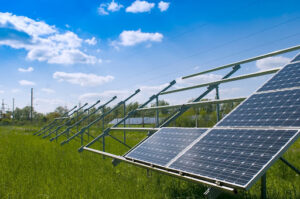
As you search for the perfect solar energy company or solar panel installer, you may come across a term known as ‘degradation’. Solar panel degradation refers to a drop in efficiency and performance over the life of the panel. This occurs due to the presence of tiny fractures in the silicon cells, known as micro-cracks.Degradation is influenced by environmental conditions, panel quality, and how long the panel has been in use. Solar degradation is important as it can affect the efficiency of your solar panel over the years.
Factors that affect the degradation rate
According to tests conducted by the National Renewable Energy Laboratory (NREL), solar panels have a median degradation rate of 0.5%. This means that a panel’s ability to generate electricity will reduce by roughly 0.5% after each year of use. Even the highest quality panels will decrease in efficiency over time but degradation can also be affected by weather conditions and climate.
Temperature
In Australia, spring and summer are the biggest energy-generating seasons of the year due to longer periods of sunlight. However, the higher temperatures associated with the warmer seasons can produce additional stress on your panels. The same is true for colder climates. As the temperature changes, components in the panels can expand or contract, resulting in slow deterioration.
Humidity
The combination of high humidity and warm temperatures can potentially result in corrosion or electrical degradation of certain components.
Wind
On hotter days, wind can help cool down your solar panels and reduce stress from temperature fluctuations. However, depending on the speed and direction of the wind, your panels may flex which can reduce efficiency over time.
UV Damage
In order to provide protection from constant UV exposure, the majority of solar panels are treated with a UV blocker to minimise degradation. On cheaper-made or installed panels, UV radiation can cause the panels to discolour or fall apart as the adhesive breaks down.
How to slow degradation
While degradation can’t be prevented completely the rate can be slowed to ensure your solar panels last for as long as possible.
Contact Solar System, a leading solar energy company in Sydney, for tailored advice on how to reduce the effects of degradation.
Panel quality
The easiest method to reduce degradation is to ensure you’re purchasing a high-quality panel that complies with all Australian Standards. You can even refer to the tier system which denotes the reputation of a manufacturer for performance and quality. As a top solar panel installer, Solar System has a selection of Tier 1 solar products available for your home.
Solar panel maintenance
To ensure the optimum performance of your solar panels, it’s essential to undertake regular maintenance of the system. If you live in an area without regular heavy rainfall you may wish to have your panels cleaned, in line with the manufacturer’s instructions. This can reduce dirt build-up and prevent electrical hot spots.
On top of periodic cleaning, inspections from qualified installers can identify any potential issues with any of the components that could contribute to degradation. An inspection is recommended every two to three years.
For more information about degradation rates or to book a free assessment, contact Solar System, a leading solar company in Sydney.
